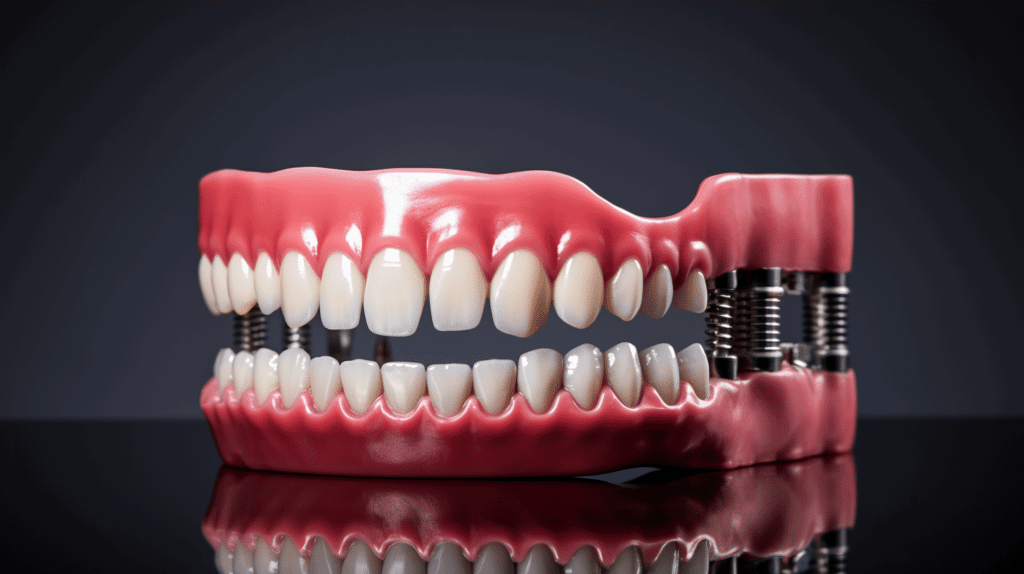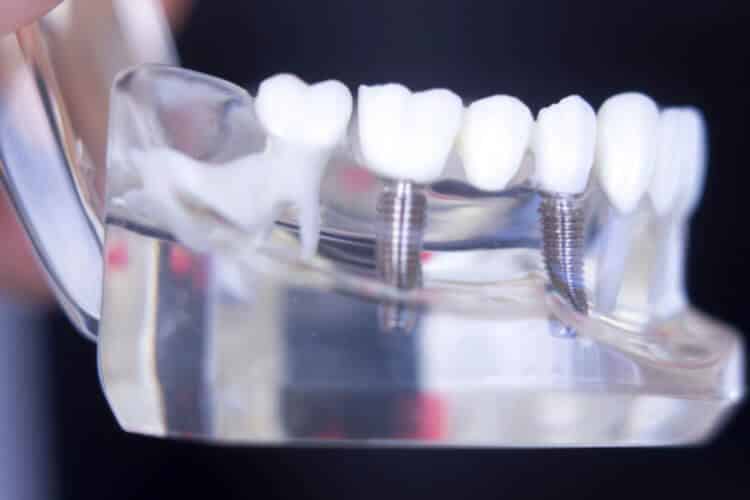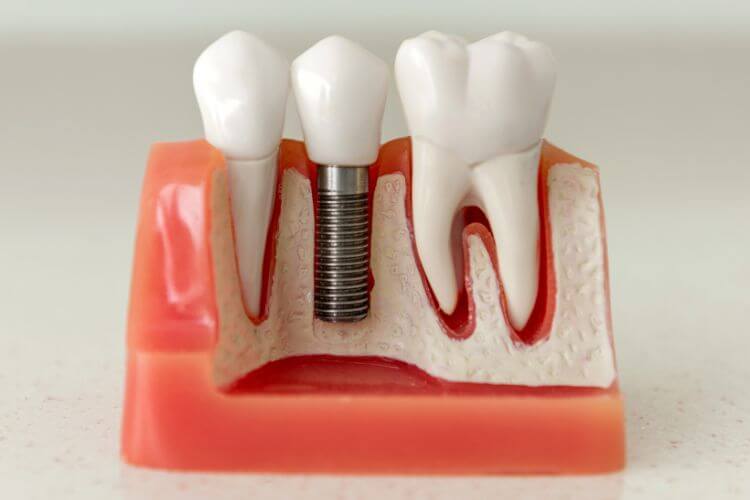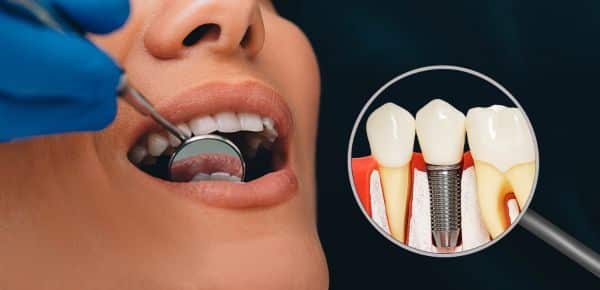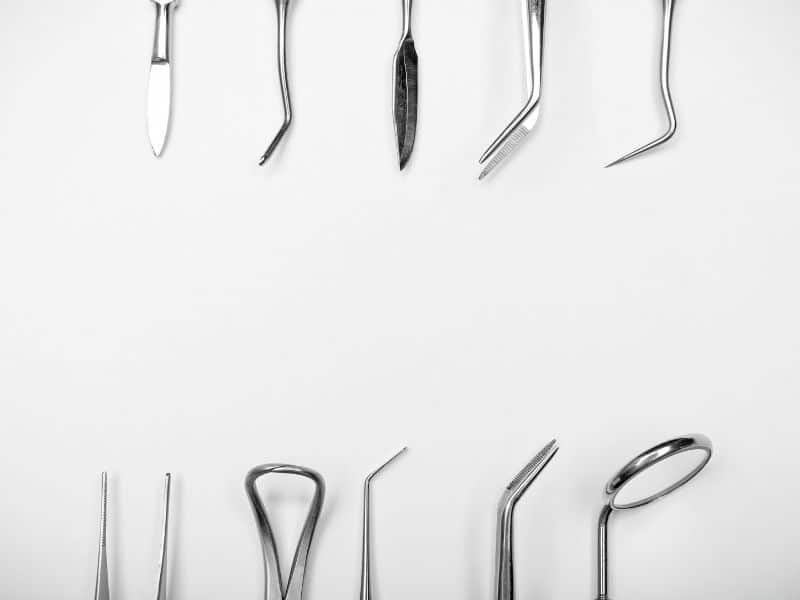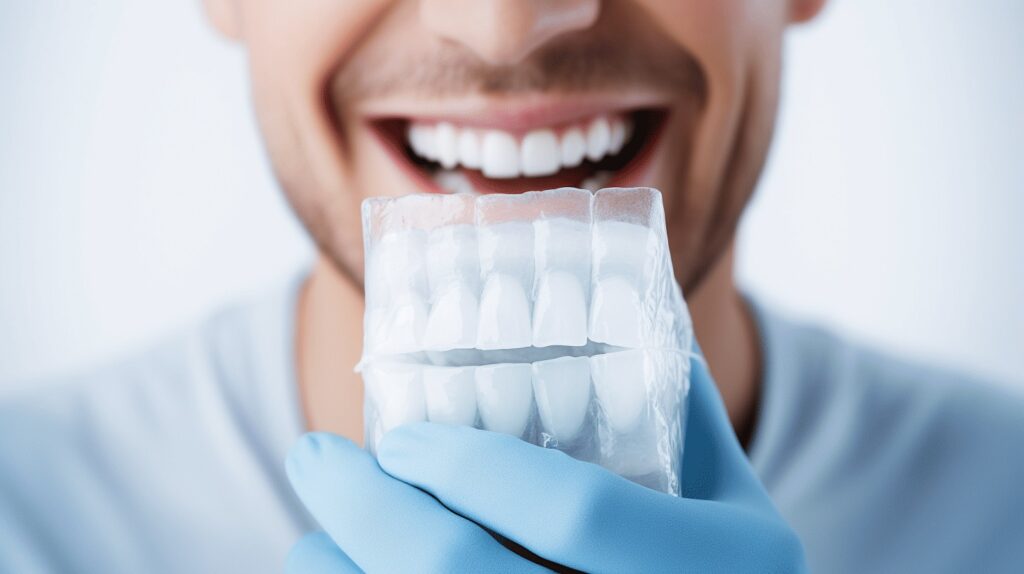Welcome to the fascinating world of dentistry! In this article, we delve into the two key players in tooth replacement technology – dental implants and traditional methods such as dentures, bridges, crowns, and root canal therapy Dental Implants Vs Traditional Methods. Whether you’re a dental professional keeping up with recent advances, or someone exploring options for tooth replacement, this article will provide insightful information for you.
The realm of dentistry is a truly fascinating one. It has evolved monumentally over centuries, from the primitive tooth replacement methods used by our ancestors to the cutting-edge technology we see today. And in recent years, the debate between traditional dental methods and dental implants has grown in intensity. On the one hand, dental implants offer a remarkable imitation of natural teeth in terms of aesthetics and functionality. On the other, traditional methods have a long history of reliability and a broader range of affordability.
This article will not only take you through the nuts and bolts of dental implants and traditional methods, but also provide a comparative analysis of these two. Factors such as cost, longevity, aesthetics, recovery and aftercare, as well as risk and complications will be discussed in an easy-to-understand manner.
Moreover, we are also going to explore the latest trends and advancements in dental practices, helping you understand how they could potentially influence the future of tooth replacement.
Finally, we’ll offer some advice on how to make an informed decision for tooth replacement – considering factors like your oral health condition, budget, insurance coverage, and personal preferences. Trust us, this journey through the field of dentistry is going to be enlightening! So, let’s get our teeth into it, shall we? 😉
Table of Contents
Understanding Dental Implants
Unlocking smiles with renewed confidence is a goal that dental health seekers often aspire to achieve. Dental implants, an innovative solution to tooth loss, can serve as a perfect companion on this journey. But, what exactly are they? How does the procedure work, and importantly, what are the pros and cons associated with them? Before you visit a dental implant clinic, we invite you to join us on a journey to better understand these miniature marvels of dental science.
Definition and Description – Dental Implants Vs Traditional Methods
Relax in your chair, take a sip of your tea, and let’s demystify dental implants. Simply put, a dental implant is a small, typically titanium, post that acts like the root of your tooth. It supports a crown – the visible part of your tooth that gives you the winning smile 😊. Together, the implant and the crown replace your missing tooth, both functionally and aesthetically. The key to the success of a dental implant is a process known as osseointegration, which refers to how the implant meshes with your bone.
Procedure and Maintenance
Intrigued by the concept? Let’s walk you through the procedure. It all starts with a consultation where your dentist carries out various assessments to determine if you’re a good candidate for dental implants. Once given the green light, your dentist will surgically insert the implant into your jawbone. Following a healing period of about 3-6 months, during which osseointegration occurs, a custom-made crown is attached to the implant.
Maintenance of dental implants should be as natural as brushing pearly whites every morning. A regular brushing and flossing routine, along with bi-annual dental check-ups, will keep your implants in tip-top shape.
Advantages and Disadvantages – Dental Implants Vs Traditional Methods
Time to weigh the scales 🤔! On the positive side, dental implants
- offer a natural look and fit
- have a high success rate
- could last a lifetime.
On the flip side, note that
- they are more expensive than other tooth replacement options
- not everyone is a suitable candidate
- the procedure requires surgery and a healing period.
However, the potential benefits of dental implants, including restored confidence and improved oral health, often outweigh the drawbacks. Before making a decision, engage in an open discussion with your dentist to ensure this is the right path for you.
Never let tooth loss hold back your smile! Armed with this information on dental implants, you’re making the first move towards taking control of your dental health. Keep exploring, keep smiling!
Traditional Methods in Dentistry
In the realm of dentistry, rapid advancements in technology have undeniably transformed the landscape. Nonetheless, traditional methods continue to hold their ground for their proven effectiveness and reliability. This article explores traditional dental procedures, from dentures to root canal therapy, offering you a comprehensive understanding of these enduring dental solutions.
Dentures
Dentures have been our loyal companions in oral healthcare for centuries now. They serve as removable replacements for missing teeth and surrounding tissues. Designed to closely mimic your natural teeth, the key purposes of dentures are:
- Enhancing your smile and facial aesthetics
- Assisting with proper mastication (chewing) of food
- Aiding in speech.
Dentures indeed reassure us that losing natural teeth doesn’t necessarily mean compromising on the quality of life. 🦷
Bridges
If you expect a fixed alternative, dental bridges are your go-to option. A typical bridge comprises two or more crowns acting as anchoring teeth, with a false tooth (or teeth) in between. The anchor teeth could be your natural ones or dental implants. Some key benefits are:
- Restoring your natural smile
- Evenly distributing the forces of biting
- Preventing remaining teeth from shifting out of position.
Bridges give us the freedom to enjoy our favorite foods, communicate effectively, and most importantly, smile with confidence! 😄
Crowns
Crown treatments, fondly known as ‘caps’, have been an integral part of cosmetic dentistry. They encapsulate a tooth or dental implant, improving the functionality and aesthetics. Crowns primarily:
- Protect weak teeth
- Restore broken teeth
- Hold dental bridges in place
- Cover extremely discolored or misshapen teeth.
Whether it’s enhancing your smile or protecting your existing teeth, crowns literally have you ‘covered.’ 😉
Root Canal Therapy
Last, but by no means least, Root Canal Therapy is a savior for damaged or infected tooth pulp. This treatment process involves removing the pulp, cleaning and disinfecting the inside of the tooth, then filling and sealing it. The following are its crucial roles:
- Enhancing your oral health by saving your natural teeth
- Preventing the spread of infection to adjacent teeth
- Relieving toothache and enhancing comfort.
Root Canal Therapy reminds us that severe tooth pain isn’t a life sentence – there’s always a solution! ☺️
In a nutshell, while the future of dentistry may be riding on the wave of technology, these traditional methods still serve as the sturdy backbone. From dentures, bridges, crowns, to root canal therapy – they continue to give us reasons to smile. Rest assured, no matter the dental issue, there is always a resilient and reliable solution waiting for you right around the corner.
Comparative Analysis of Dental Implants and Traditional Methods
Here, we’ll be diving deep into the intriguing world of dentistry. The focus of the discussion? Dental implants VS traditional methods, the two prominent choices on the dental restoration menu. The role of dental restoration isn’t just functional – it also contributes substantially to aesthetics, comfort, and general well-being. That’s why it is essential to understand the advantages, drawbacks, and overall comparison of these two techniques. Let’s embark on this enlightening journey without delay!
Cost Comparison
First on the agenda is the all-important cost factor. On the one hand, dental implants are typically seen as a higher initial investment. On the other hand, traditional methods such as bridges or dentures might appear more cost-effective initially. However, let’s not forget the factors of longevity and durability, which can considerably impact costs over time.
- Dental Implants: High upfront cost, but long-lasting and fewer replacements required
- Traditional Methods (Bridges/Dentures): Lower upfront cost, but may need frequent replacements or adjustments
While the cost can be a significant deciding factor, it’s essential to consider it in parallel with other aspects like durability, aesthetics, and aftercare.
Longevity and Durability
The next point of comparison is longevity and durability. Dental implants, crafted from biocompatible titanium and surgically placed in the jawbone, often have a long lifespan. They act akin to natural roots, providing a strong foundation for replacement teeth.
- Dental Implants: Potentially lasting a lifetime with proper care and maintenance, offering impressive durability
- Traditional Methods (Bridges/Dentures): Often require replacement every 5-10 years
Aesthetics and Functionality
When it comes to aesthetics and functionality, both options bring unique benefits to the table. Dental implants offer a fantastic illusion of ‘real’ teeth, while dentures can be removed and cleaned separately, which some may find convenient.
- Dental Implants: Look, feel, and function like natural teeth, ensuring a seamless aesthetic
- Traditional Methods (Bridges/Dentures): Functional and customizable but may not provide the same ‘natural’ appearance or feel as implants
Dental Implants Vs Traditional Methods – Recovery and Aftercare
Post-procedure recovery and aftercare are crucial elements to consider. Dental implants might involve a more extended recovery period owing to the surgical procedure, but they demand fewer lifestyle changes in their aftercare.
- Dental Implants: Longer initial recovery, but simple long-term care resembling natural teeth maintenance
- Traditional Methods (Bridges/Dentures): Shorter initial recovery, but potentially more intensive ongoing care with possible diet restrictions and cleaning procedures
Dental Implants Vs Traditional Methods – Risks and Complications
Lastly, we should delve into the potential risks and complications associated with each method. Both options carry their share of risks, but early detection and treatment can mitigate most of these.
- Dental Implants: Possible risks include infection, nerve damage, and implant failure, but these are infrequent with experienced dental practitioners
- Traditional Methods (Bridges/Dentures): Can lead to problems like gum irritation, difficulty speaking and eating, and potential alteration of taste sensations
This comparative analysis should shed some light on the complex decision-making process surrounding dental restoration — don’t forget that the best choice is always the one that aligns with your unique needs, lifestyle, and financial situation. Always consult with an experienced dentist for personalized advice. Remember, your smile is priceless! 🦷
Current Trends and Advancements in Dental Treatments
As connoisseurs in the realm of dental care, we’re constantly astounded by the rapid advancements taking place. The dental field, much like every other area of healthcare, is in a constant state of evolution, promising better treatment outcomes and patient experiences. In this section, we’re excited to bring you up to speed on some of the groundbreaking trends and advancements that are revolutionizing dental treatments.🦷
Advancements in Dental Implants
Implants have been a mainstay in dental procedures for quite some time. However, the introduction of digital planning and 3D printing has taken this procedure up a notch. Thanks to these technologies, the process of dental implant surgery is becoming even more precise and predictable. Here’s what’s new:
- Custom implants: 🛠️ 3D printing enables the creation of patient-specific implants, improving comfort and fit. This increases the success rate of the implant.
- Speedy healing: The use of Platelet-rich plasma (PRP) in surgeries is boosting healing rates and shortening recovery times.
- Less invasive techniques: Mini dental implants, requiring a minor surgical procedure and often accomplished in a single visit, are becoming popular.
Dental implants have always been a transformative procedure for individuals with tooth loss. However, these technological innovations are making it faster, more effective, and more accessible than ever before.
Progress in Traditional Dental Methods
While newer techniques are impressive, it’s the advancements in traditional methods that bring cheer to the most dental patients. The evolution here means existing procedures just got a lot more comfortable and efficient.
- Painless injections: 🚫💉 The development of computer-controlled local anaesthesia delivery is bringing an end to painful injections. This means a lot less dread for those who are uneasy about dentist visits.
- Effective cavity treatment: A new method called Resin Infiltration is stepping in to treat small cavities without the need for drilling, making the process less scary and a lot quicker.
- Quick and affordable braces: Clear, removable aligners are gaining popularity as an alternative to traditional braces, which require less time for the teeth-straightening process and are practically invisible.
These advancements in traditional dental methods have made dental care more efficient, less painful, and accessible, keeping up with the pace of the fast-moving world we live in.
Boldly changing the landscape of dentistry, these advancements are making a marked difference. With continued research and innovation, we’re excited about the future of dental treatments and the positive impact they’ll have on our community’s oral health and well-being.
Making the Decision: Patient Factors to Consider
Booking a dental appointment to discuss the health of our teeth can be daunting. But what if we tell you that the fear of the dentist is less about the dentist themselves and more about being unaware of what to expect and how to make informed decisions? 🤔
Therefore, we’d like to alleviate some of your fears and uncertainties by pointing out the factors you as a patient should consider before taking any dental treatment. These factors include your oral health condition, budget and insurance coverage, and lifestyle and personal preferences. Let’s explore these in detail.
Oral Health Condition – Dental Implants Vs Traditional Methods
Your oral health condition is the very first and most critical factor to consider. Certain treatments are more suitable for particular oral health issues. For instance, if you have a cavity, you would likely need filling, and root canal treatment might be the best option if you have deep decay affecting the tooth’s pulp. Your dentist will discuss your options with you, but being aware of the process ahead of time can be helpful.
Budget and Insurance Coverage
Next, consider the cost of potential dental treatments. They could vary widely based on complexity and materials used. Be realistic about your budget, and think about whether your dental insurance offers any coverage. If finances are a concern, discuss them with your dentist as they might suggest alternative treatments that fit better within your budget.
Lifestyle and Personal Preference
Last but certainly not least, your lifestyle, personal preferences, and comfort play a vital role in this decision-making process. If you have a busy lifestyle and need quick solutions, you might prefer treatments that require fewer sessions. If dental visits create anxiety for you, sedation dentistry might be a suitable option for you.
So, it’s important to keep all these factors in mind and have an open discussion with your dentist so they can understand your needs and circumstances. Rest assured that their goal is making you comfortable and giving you a healthy smile! 😊
Your journey to a beautiful smile begins with informed decisions. So be sure to consider your oral health condition, financial realities, and personal preferences before settling on a treatment plan!
Dental Implants Vs Traditional Methods – Conclusion
In the evolving world of dentistry, making decisions about procedures can feel overwhelming. Whether you’re considering dental implants or traditional methods like bridges, dentures, crowns, or root canals, it’s essential to weigh the pros and cons. And while the dental landscape continually innovates with new advancements, it’s your personal factors—oral health, budget, insurance coverage, lifestyle, and personal preference—that will ultimately guide your decision.
At Wilshire Smile Studio, we believe in empowering our patients with detailed knowledge before they make their dental health decisions. We’re here to assist you by providing top-notch care utilizing state-of-the-art technology, all within a comfortable and welcoming environment. We understand that every smile, like every patient, is unique. Hence, we are committed to personalized care tailored to your specific oral health needs.
Ultimately, your optimal dental solution may be a cutting-edge dental implant or a time-tested traditional method. Remember, the goal is the same – a healthy, beautiful smile that shines with confidence.
Embark on your journey to perfect oral health with Wilshire Smile Studio, and let us guide you towards achieving your ideal smile. Because every smile matters to us, as much as it matters to you. 😄🦷
Book your free consultation with us online or call (323) DENTIST (323-336-8478) today.
Frequently Asked Questions
1. What are the benefits of dental implants compared to traditional methods?
Dental implants offer several advantages over traditional methods, including better aesthetics, improved functionality, durability, and long-term cost-effectiveness. They also help preserve bone structure and prevent adjacent teeth from shifting.
2. Are dental implants a suitable option for everyone?
While dental implants are a great solution for many patients, not everyone is eligible for the procedure. Factors such as overall oral health, bone density, and medical conditions can determine whether implants are a suitable option. Consulting with a dental professional is recommended.
3. How long does it take to get dental implants?
The duration of the dental implant process can vary depending on several factors, including the patient’s oral health, the need for additional procedures like bone grafting, and the healing rate. On average, the process can take anywhere from 3 to 6 months.
4. Is the dental implant procedure painful?
The dental implant procedure is performed under anesthesia, so patients typically experience minimal discomfort during the actual surgery. After the surgery, some mild soreness and swelling may occur, but pain can be managed with prescribed medications.
5. How long do dental implants last?
With proper care and maintenance, dental implants have the potential to last a lifetime. Regular dental check-ups, thorough oral hygiene practices, and avoiding habits like smoking can contribute to the long-term success of dental implants.


